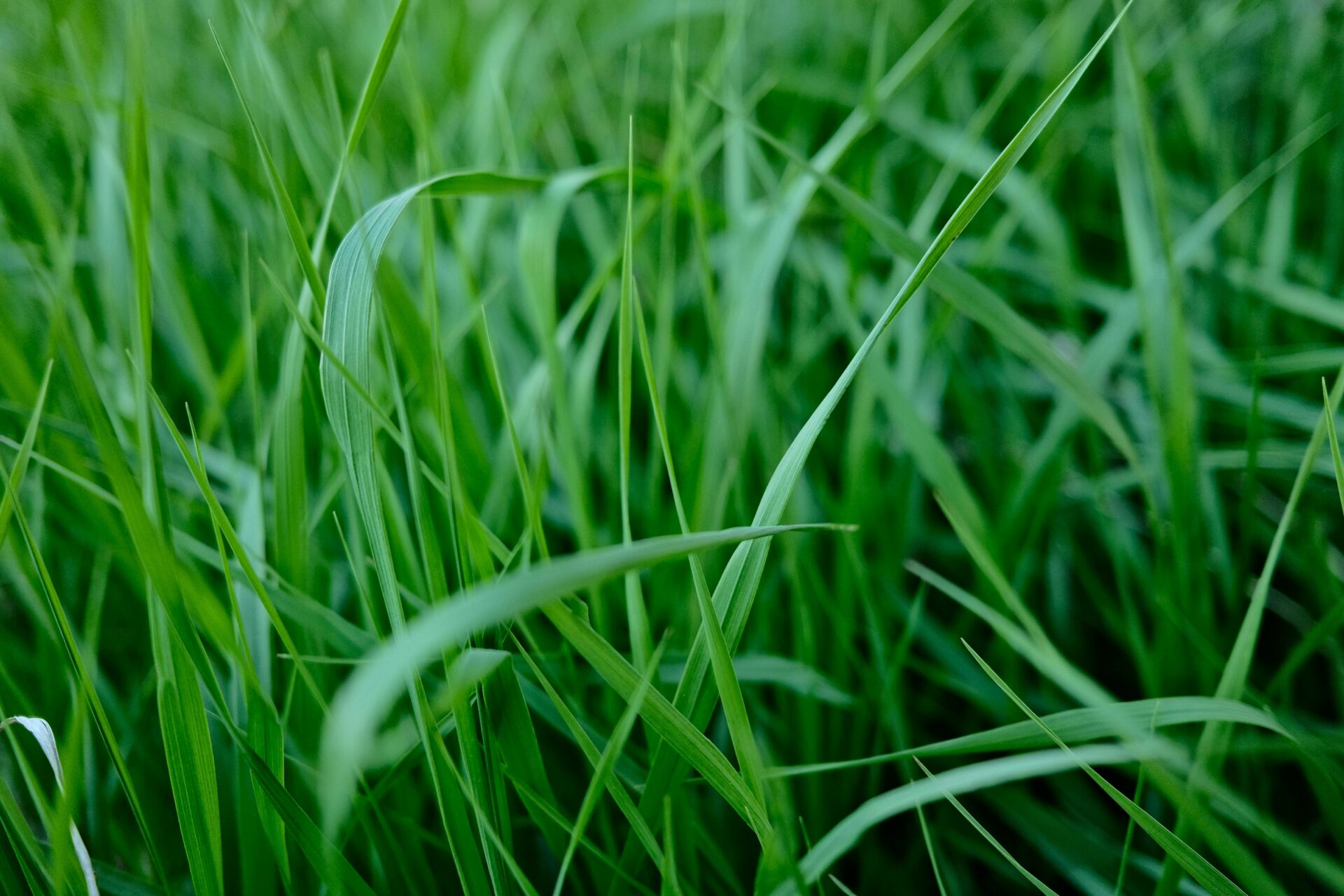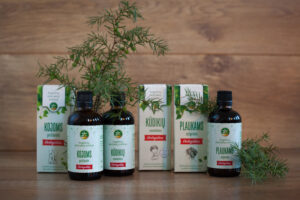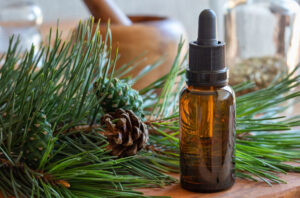
Citronella (Cymbopogon nardus / Cymbopogon winterianus)
Plant family: Poaceae/Gramineae
Synonyms –
Kilmė
Citronella oil comes from the green and tall as a sword blade herb, Cymbopogon. This fragrant herb gets its name from the French word for ‘melissa’ because of its floral aroma, which is similar to citrus. Native Sri Lanka. Widely cultivated in other tropical countries.
Gamybos būdas
Steam distillation of Cymbopogon herb. Up to 100 kg of fresh Cymbopogon winterianus grass is needed to produce 1 kg of essential oil.
Aliejaus pobūdis
Light yellow clear liquid with a fresh and sweet aroma reminiscent of citrus and melissa.
Perfumed note – the top, strong fragrance note lasts up to 24 hours. Citronella essential oil has a rich citrus and lemon balm aroma.
Citronella oil is widely used in perfumery, both directly and indirectly. Soaps, soap flakes, detergents, household cleaners, technical products, insecticides, etc., are often scented exclusively with this oil.
Main ingredients
| Citronellalis | 34.8 -42.8% |
| Geraniol | 22.1 -25.4% |
| (-)-Citronellol | 9.7 -11.5% |
| Elemolis | 2.0-5.6% |
| (+)-Limonene | 2.6 -5.5% |
| Geranyl acetate | 2.9 -5.1% |
| Beta-Element | 1.9-3.2% |
| Beta-Cubeben | 1.8 -2.8% |
| Eugenol | 1.1 -2.5% |
| Gamma-Kadinen | 1.7 -2.3% |
| Citronellal acetate | 1.0 – 2.0% |
| T-Amorpholis | 0.7 – 1.4% |
| sigma-Kadinen | 0.5 – 1.2% |
| Linalool | 0.5 -1 .1% |
| Methyleugenol | 0.0 – 0.1% |
Savybės
Diuretic, antipyretic, fungicidal, antimicrobial, antibacterial, antidepressant, antiseptic, antispasmodic, anti-inflammatory, anthelmintic, stomachic, stimulant, tonic, anthelmintic.
Therapeutic properties
Citronella oil, with its anti-inflammatory, antibacterial and expectorant properties, can relieve respiratory discomfort such as congestion, infection and irritation of the throat or sinuses, shortness of breath, mucus production and symptoms of bronchitis. Simply spray a mixture of 2 drops each of citronella, lavender and peppermint essential oils to achieve this relief, as well as to improve circulation and reduce stress and anxiety.
Mix 10 drops of citronella essential oil with 10 ml of coconut oil for a toning massage blend that stimulates, supports and strengthens all body systems, including the digestive, excretory, nervous and endocrine systems. Gently massage this mixture all over the body to boost immunity and blood circulation, relieve arthritic discomfort, back pain, abdominal cramps and headaches.
To detoxify, dilute 5 drops of citronella essential oil in 5 ml of basic sesame oil. Rub this mixture on the parts of the body affected by pain and inflammation. This mixture not only reduces both symptoms, but also promotes the elimination of toxins from the body through sweat and excretory functions. To stimulate digestion and relieve menstrual cramps, the mixture can be massaged on the abdomen in a circular motion for 1 minute, or until it is completely absorbed into the skin.
For a stimulating massage to relieve fatigue and drowsiness, dilute 2-4 drops of citronella essential oil in 2 tablespoons. olive oil and massage into the skin until fully absorbed. This blend is thought to help release negative emotions such as aggression, anxiety and sadness from the body.
Aromatherapy uses
Citronella essential oil used in aromatherapy slows or prevents the growth and spread of harmful airborne bacteria and repels flying insects such as mosquitoes. It relaxes and lifts negative feelings such as sadness, anxiety and stress, relaxes the body and mind and promotes a sense of carefree. It is also believed to relieve muscle cramps, such as menstrual cramps, as well as respiratory and nervous system spasms. This, in turn, eliminates unpleasant sensations such as coughing. Its fresh, bright citrus scent is known to naturally freshen up dirty air. This cleansing and refreshing quality makes citronella oil an ideal ingredient for natural indoor sprays and diffusers. Its uplifting scent is also believed to normalise irregular heartbeats, relieve headaches, migraines, nausea, symptoms of neuralgia and colitis, and increase energy levels to overcome fatigue. The scent of citronella oil is known to blend well with all citrus essential oils such as lemon and bergamot, as well as cedarwood, clary sage, eucalyptus, geranium, geranium, lavender, lavender, peppermint, pine, rosemary, sandalwood, and tea tree essential oils.
Psichologinis profilis
The fresh and fruity lemon scent of Citronella essential oil keeps negative emotions and thoughts at bay, thus uplifting the ambiance. The aroma of this oil induces a feeling of optimism, boosting energy levels. It removes unhealthy thoughts, sadness or anxiety, relaxes the body and mind, and promotes the awareness of lightness.
Puikiai tinka naudoti su:
essential oils of tea tree, bergamot and other citrus fruits, cinnamon, spruce, clove, ylang-ylang, juniper, cedar, eucalyptus, eucalyptus, lavender, peppermint, muscadine, clary sage, pine, sandalwood, rosemary, vetiver.
Mūsų saugos patarimai
We recommend a maximum of 18.2% dermal administration, based on 29.1% geraniol and 5.3% dermal administration (see description of geraniol in Chapter 14, Lit.2). Given its chemopreventive activity and the fact that it is not genotoxic, that anticarcinogens account for more than 60% of the oil and that methyleugenol is present in only 0-1.7% of the oil, we do not consider that citronella oil poses a significant carcinogenic risk.
Įspėjimai
Low risk of skin sensitisation, otherwise GRAS status (Generally Recognised as Safe). Dilute before use. For those with sensitive skin, a sensitivity test is recommended before use.
Other species
Citronella from Ceylon and Java are two varieties whose essential oil is obtained by steam distillation from their fresh leaves. The basic chemical composition of the two types of citronella oil is similar, but the amounts of the constituents differ. The main chemical constituents of Ceylon citronella, derived from Cymbopogon nardus, are geraniol, camphene, limonene, methyl isoeugenol, geranyl acetate, borneol, citronellal, and citronellol. The main constituents of Javanese citronella oil from Andropogon nardus are citronella, geraniol, citronellol, limonene and geranyl acetate.
Due to its higher geraniol and citronella content, Java is the variety considered to be of higher quality. The colour of both oils varies from pale yellow to brownish; however, the Java variety usually has a fresher lemony scent reminiscent of lemon essential oil, while the Ceylon variety’s citrus aroma can have a warm, woody undertone.
Nuorodos:
- R. Tisserand, R. Young, E. M Williamson “Essential Oil Safety. A Guide for Health Care Professionals”, Churchill Livingstone ELSEVIER, 2014
- R. Balz “The Healing Power of Essential Oils”, LOTUS LIGHT SHANGRI-LA, Twin Lakes, 1996
- J. Lawless, The Encyclopedia of Essential Oils (Updated Edition), London: Harper Thorsons, 2014
- B.M. Lawrence, Essential Oils 1981-1987 (Wheaton: Allured Publishing, 1989), 39-40.
- P.Dugo, L. Mondello, E. Sebastiani, et al., Identification of Minor Oxygen Heterocyclic Compounds of Citrus Essential Oils by Liquid Chromatography-Atmospheric Pressure Chemical Ionisation Mass Spectrometry (Journal of Liquid Chromatography & Related Technologies 22, 1999), 2991-3005.
- B.M. Lawrence, Progress in Essential Oils, Number 2. (Perfumer & Flavorist 25, 2000),
46-49. SCCP, Opinion on Furocoumarins in Cosmetic Products. (Scientific Committee on Consumer Products, 13-Dec-2005), SCCP/0942/05. - L.G.Dudchenko, G.P.P.Potebnya, N.A.Krivenko “Aromatherapy and Aromatherapy Massage”, “Maximum”, Kyiv, 1999





